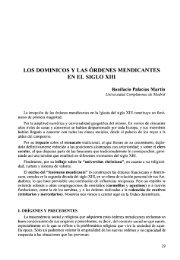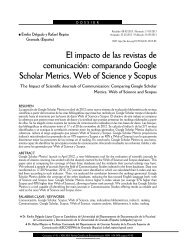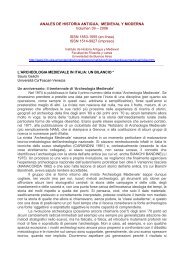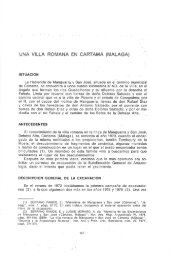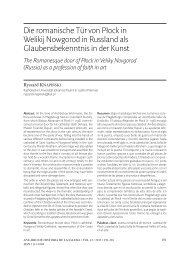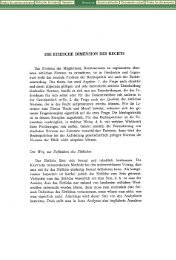90 LUCIE ROSSOWOVÁ [Galdós 2006]: PÉREZ GALDÓS, Benito. Doña Perfecta, Teddington: Echo Library, 2006. [Ramos 1839]: RAMOS GARCÍA, Vicente, Obispo de Almería. Exortación que el Gobernador Eclesiástico de la ciudad y Obispado de Almería, Sede Vacante, dirige al clero y pueblo del mismo en cumplimiento de la real orden circular de S.M, Almería. Almería: Imprenta de Ramón González, 1839. [Pastor 1885]: SÁNCHEZ PASTOR, Emilio. 4 por 100: comedia en un acto y en prosa. Madrid: Florencio Fiscowich, 1885. [Tamayo 1852] TAMAYO Y BAUS, Manuel. Angela: drama en cinco actos y prosa. Madrid: Imprenta de Operarios a cargo de D .F. R. del Castillo, 1852. [Tamayo 1860] TAMAYO Y BAUS, Manuel. Una apuesta: comedia en un acto. Madrid: Imprenta de Cristóbal González, 1860. [Valera 1878] VALERA, Juan. Asclepigenia: diálogo filosófico-amoroso. Revista Contemporánea, 1878, año IV, número 61, tomo XV, volumen III, Madrid. [Vega 1848] VEGA, Ventura de la. La Farsa. Madrid: Imprenta de don José María Repullés, 1848. [Carreño 1808–1809] XIMÉNEZ CARREÑO, Manuel (ed.). Demostración de la lealtad española : colección de proclamas, bandos, órdenes, discursos, estados de exercito [sic] y relaciones de batallas publicadas por las Juntas de Gobierno o por algunos particulares en las actuales circunstancias. Cádiz, 1808–1809. Fuentes secundarias ÁLVAREZ, Alfredo I. Hablar en español, la cortesía verbal, la pronunciación del español estándar, las formas de expresión oral. Oviedo: Nobel, 2005 AUSTIN, John Langshaw. Jak udělat něco slovy. Praha: Filosofia, 2000. BRAVO, Diana. Pragmática sociocultural. La configuración de la imagen social como premisa socio-cultural para la interpretación de actividades verbales y no verbales de imagen. In Des) cortesía en español. Espacios teóricos y metodológicos para su estudio. Ed. Franca ORLETTI; Laura MARIOTTINI. Roma-Estocolmo: EDICE, 2010, 19–46. BROWN, Penelope; LEVINSON, Stephen C. Politeness. Some universals in language use. Cambridge: Cambridge University Press, 1987. CURCÓ, Carmen. ¿No me harías un favorcito?: reflexiones en torno a la expresión de la cortesía verbal en el español de México y el español peninsular. In La pragmática lingüística del español. Recientes desarrollos. Ed. Henk HAVERKATE; Gijs MULDER; Caroline FRAILE MALDO- NADO. Amsterdam: Rodopi, 1998, 129–172. ESCANDELL VIDAL, María Victoria. Cortesía, fórmulas convencionales y estrategias indirectas [online]. Revista Española de Lingüística, 1995, tomo 25, nº 1, 31–66. In: http://www.uned.es/ sel/<strong>pdf</strong>/ene-jun-95/25-1-Escandell.<strong>pdf</strong>. ESCANDELL VIDAL, María Victoria. (1998), Cortesía y relevancia. In La pragmática lingüística del español. Recientes desarrollos. Ed. Henk HAVERKATE; Gijs MULDER; Caroline FRAILE MALDONADO. Amsterdam: Rodopi, 1998, 7–24. FOWLER, Roger. Literature as social discourse: the practice of linguistic criticism. Michigan: Indiana University Press, 1981. HAVERKATE, Henk. La cortesía como estrategia conversacional. In La semiótica del diálogo. Ed. Henk HAVERKATE. Amsterdam: Editions Rodopi, 1987, 27–64. HAVERKATE, Henk. La cortesía verbal. Estudio pragmalingüístico. Madrid: Gredos, 1994. IGLESIAS RECUERO, Silvia. Aportación a la historia de la (des)cortesía: las peticiones en el siglo XVI. In Des)cortesía en español. Espacios teóricos y metodológicos para su estudio. Ed. Franca ORLETTI; Laura MARIOTTINI. Roma-Estocolmo: EDICE, 2010, 369–398. OROZCO, Leonor. El empleo de perífrasis con el verbo poder en la realización de peticiones. In La (des)cortesía y la imagen social en México. Estudios semiótico-discursivos desde varios enfoques analíticos. Ed. Lidia RODRÍGUEZ ALFANO. Monterrey-Estocolmo: UANL-EDICE, 2009, 105–122.
ACERCA DE LAS ESTRATEGIAS VERBALES DE LA PETICIÓN CORTÉS DECIMONÓNICA 91 SEARLE, John R. Speech acts. An assay in the philosophy of language. Cambridge: Cambridge University Press, 1969. SEARLE, John R. A classification of illocutionary acts. Language in society, 1976, nº 5, 1–23. Abstract and key words The purpose of this article is to analyse strategies and linguistic resources which characterize the verbal politeness of the directive speech acts in European Spanish of the nineteenth century, specifically verbal politeness of the requests. We have collected texts written in the 19th century and these will be analysed. In this work we will offer various examples which serve to illustrate of concrete usage of this historic period. The justification for this work is that we consider that it is necessary to pay more attention to the pragmatic aspects of the past. The theoretical framework is based on the concept of the verbal politeness of Brown and Levinson (1978, 1987) and the theory of speech acts of Austin (1962) and Searle (1969, 1976). The results of the analysis show diverse linguistic strategies of the politeness present in the corpus. In our work we have found that speakers tended to use preferentially in their requests indirect and softened linguistic form. Negative face; politeness; pragmalinguistics; request; 19 th century.



